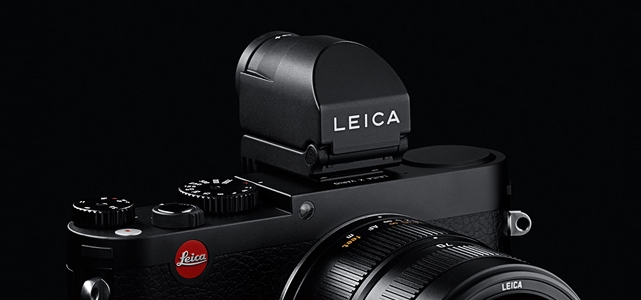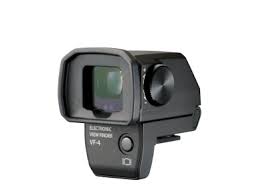
I admit I have a thing about viewfinders. I like ‘em. And, by preference, I like ‘em built into the camera. When I wrote about the rumoured Leica T system I was disappointed to note that we are again likely to have to suffer a slide-on external finder. The main competing cameras―from Fuji, Olympus, Panasonic and Sony―all feature excellent electronic viewfinders that are an integral part of the camera.
True, all these built-in devices demand a substantial hump which adds to the bulk of the camera and does rather spoil the lines. Only Panasonic, with the GX7, has managed to incorporate a finder that doesn’t add to height. What’s more, this compact marvel tilts upwards to steal perhaps the only benefit of the external type of finder―the option of a vertical view.
External finders do have one other minor advantage: They can be removed to slim down the camera when travelling or when space is at a premium. But they come with built-in disadvantages as well. The principal one is cost. Anything from £250 to £400 is charged for a bolt-on unit. This is harsh when you consider that the premium appears to be miraculously absorbed in cameras where the finder is integral. You make your comparisons then find you need an accessory costing several hundred pounds in order to fully compete with the opposition.
The biggest irritation with external finders, at least to my mind, is that they slide off far too easily. This is the case with finders for the Leica M, Leica X series and the Sony RX1. The only securely anchored external finder I know is the Panasonic LVF2 for the LX7 and Leica D-Lux 6. This features a lock which can be released by pressing a button. Very sensible, and I cannot imagine why other finders have been designed without such elementary security.
On balance, therefore, the best option is to have the finder built into the body of the camera. I can barely tolerate the Leica Visoflex EVF2 (aka Olympus VF-2) when mounted on the X2 or X Vario. It is so out of proportion that it ruins the appearance of the camera and increases the height to the point that storage in a bag becomes a problem. Even when you do get the thing in the bag, removing it again invariably causes the EVF to slide off the camera. Many’s the time I have nearly lost this expensive little frippery by carelessly pulling the camera out of the bag. Incidentally, I have a similar problem with the hump on the Sony A7r. The only difference is that this hump is part of the camera and cannot slide off.
In contrast, I have no real complaint with the use of the same EVF2 on the Leica M. For starters, I don’t need to use it much. I prefer to employ the built-n optical view finder because I find focusing easier and more precise. And switching between the Monochrome and M means that I am generally more comfortable with the optical finder, especially for lenses between 28 and 50mm. The EVF2 comes into its own for wider lenses where, in any case, you would need an accessory viewfinder, and the balance is just tipped in favour of the EVF for lenses of 75mm and over because of the relatively small frame lines in the rangefinder window. Most times, though, I end up using my favourite 75mm APO Summicron with the OVF because I can’t be bothered mounting the EVF2. So with the M I can put up with the external device.

While on the subject of electronic viewfinders, the world has moved on since Leica adopted the EVF2 on the X2 compact. The same modest 1.4 Megapixel device has been trundled out on the M and the X Vario while the competitors have been wowing us with greater things. The 2.4MP Olympus VF-4 and the truly remarkable large viewfinders in the Olympus OM-D EM-1 and Fuji’s XT-1 show how it can be done.
The big question in my mind is whether the upcoming Leica T will also feature the ancient and out-gunned EVF2 or will adopt a re-badge of the Olympus VF-4. Sadly, I suspect, the company would then worry that the T has a better viewfinder than the M. That would not do at all, although I believe it should be possible to move on. At some stage it has to be done and the T is the ideal opportunity.
In conclusion, external viewfinders are now pretty much old hat except for use with scaled-down system cameras such as the Fuji X-A1. the ultra-cute Panasonic GM1 or the Olympus PEN range. These bodies are small for a reason and, in the main, users are happy to compose on the rear screen (with the GM1 there is no choice because it has no hot-shoe mount). The new Leica is likely to fall between the two camps, competing with the flagship cameras from Olympus, Fuji, Panasonic and Sony but without the all-important built-in finder and with the inherent disadvantage that the external finder accessory further widens the gap in price.

Just wanted to say keep up the good work. Your photo blog is the first website I visit each day!